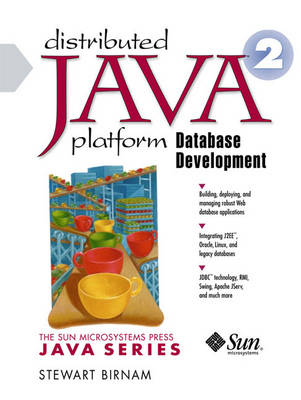
Distributed Java 2 Platform Database Development
Prentice Hall (Verlag)
978-0-13-026861-7 (ISBN)
- Titel ist leider vergriffen;
keine Neuauflage - Artikel merken
PLEASE PROVIDE
Need to build, enhance, integrate, or manage an enterprise-class Java-based distributed database system? Tired of "toy examples"? Want to see how everything fits together in a live, breathing system? Here's your chance. Stewart Birnam shows experienced professionals all they need to create and administer robust database applications leveraging Java technologies, and running on today's key platforms-Oracle 8.x and Linux. You won't just learn a laundry list of APIs and technologies: you'll master real-world strategies for integrating them in reliable, deployable systems-and discover proven solutions for the problems that stand in your way. Understand every issue associated with building scalable, efficient, multi-tier Java code, including server configuration, brokers, client interaction, and maximizing system price/performance. Make the most of Java's database APIs; and master powerful database access techniques, from queuing to complex joins, multimedia content delivery to Oracle-specific features.Learn how to build and administer RMI servers; streamline deployment and distribution of enterprise applications; maximize code reusability; and manage your distributed application as efficiently as possible.
STEWART BIRNAM is a Senior Database/Systems Developer at a leading visual effects and computer animation company in Northern California.
1. Distributed Database Application Design.
Quick Start. Technology Overview. Database Application Models. Two-tier Model. N-tier Model (Three or More Tiers). Comparing Both Models. Migrating to a Multitier Architecture.
2. The Database API.
Quick Start. Technology Overview. An Inventory Database. API Design. Complete Code Listings.
3. The RMI Server.
Quick Start. Technology Overview. RMI Under 1.2 vs. 1.1. How Applications Find Remote Objects: The RMI Registry. The RMI Object Servers. Organizing Your System. Sharing Files.
4. The Swing Client.
Quick Start. Technology Overview. Programming Concepts. Putting It All Together--The Actual Client. Sorting Utility Functions for the GUI. Reusable GUI Components. JTable as a Dynamic Database DataWindow.
5. The Servlet as Client.
Quick Start. Technology Overview. Programming Concepts. The UnitDbServlet. Using RMI from a Servlet.
6. The Command-Line Client--Providing Simplified Access to Your Database API.
Quick Start. Technology Overview. Programming Techniques. Applications. Conclusion.
7. Distribution.
Quick Start. Technology Overview. Setting Up Your Server for Multiple Protocol Access. Conclusion.
8. Reading and Writing Multimedia Content, Database BLOBS, and Web-based Binary Content Delivery.
Quick Start. Technology Overview. Database Schema Design for BLOBS. Adding BLOB Support in the API and Implementation. Web-based Binary Content Delivery. Code Listings.
9. Monitoring Tools and System Calls.
Quick Start. Technology Overview.
Appendix A: Javadoc API Documentation for the Classes Used in This Book.
Database API. Swing RMI Client. Web Client. Command Line Client. Remote Monitoring. Utilities.
Appendix B: SQL for Creating the Schema Used in This Book.
Appendix C: Example Makefile.
Index.
| Erscheint lt. Verlag | 15.12.2000 |
|---|---|
| Verlagsort | Upper Saddle River |
| Sprache | englisch |
| Maße | 177 x 234 mm |
| Gewicht | 579 g |
| Themenwelt | Mathematik / Informatik ► Informatik ► Netzwerke |
| Informatik ► Programmiersprachen / -werkzeuge ► Java | |
| Mathematik / Informatik ► Informatik ► Web / Internet | |
| ISBN-10 | 0-13-026861-5 / 0130268615 |
| ISBN-13 | 978-0-13-026861-7 / 9780130268617 |
| Zustand | Neuware |
| Haben Sie eine Frage zum Produkt? |
aus dem Bereich


